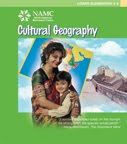As many of our students and graduates begin a new year at their Montessori elementary schools, questions about how to schedule curriculum activities is often top of mind. Below are some thoughts on setting up Montessori lesson/activity schedules using examples in the cultural studies.
Firstly, I would like to remind our readers that while the Montessori curriculum is rich in lessons and resources, it is important to always keep in mind that the child has three years in which to learn the material. There are several schools of thought when approaching the issue of implementing the elementary curriculum in the Montessori classroom; here are three popular approaches:
- Every subject is taught spontaneously throughout the year at three different age levels
- Cultural subjects may be rotated over a three-year cycle
- Cultural subjects may be rotated throughout the year, with different age-leveled presentations
Montessori Elementary Teachers – Tips for Curriculum Scheduling
Every subject is taught spontaneously throughout the year at three different age levelsEvery cultural lesson is placed on the shelves in the Montessori elementary classroom. As the students are interested, they approach their teachers for introductory lessons. More ideally, they find older classmates who have already mastered the particular material, and learn from them. After this, the teacher records the lessons and concepts that have been presented, as well as the level of mastery that the student has achieved or is working toward.
If a certain Montessori work is being over-used, the teacher may choose to remove it from the shelf for a time and replace it with another Montessori work. Or if, for example, a child only wants to do Montessori Landform work, the Montessori teacher may suggest that the student select a work in a different subject area.
When a child chooses an advanced work, the Montessori teacher guides the student to an introductory lesson or two, to help them learn and understand the concept before moving forward to the advanced work. This approach is very much in line with Montessori’s "follow the child" philosophy, where the child drives the curriculum choice through natural interest. However, it is important to keep in mind that not every child is interested in every area and may need careful and respectful prompting or direction toward work that covers the full curriculum over the three-year period. Alternatively, some Montessori teachers determine that the child is not yet ready for certain advanced work, and may allow the student to work on other areas until the child shows interest and/or readiness.
Cultural subjects may be rotated over a three-year cycle
In my personal experience, I have presented as many lessons as possible to all the students. For example, even though the NAMC 6-9 Zoology manual might suggest that a particular lesson is for Year 1 students, I do try to give all the Zoology lessons to Year 1, 2 and 3 students.
Here is an example of rotating subjects over a three-year cycle in the Montessori 6-9 classroom:
- First year: Zoology, Cultural Geography
- Second year: Botany, History, Health Sciences
- Third year: Matter & Astronomy, Physical Geography
- The Five Great Lessons activities are given each year separately, as a catalyst to the cultural studies of the year.
Cultural subjects can be rotated throughout the year, with different age-leveled presentations
If using this approach, Montessori teachers might split the school year into thirds and adjust the cultural curriculum accordingly. For example:
- Fall: Five Great Lessons/Cosmic Ed. & Peace, Matter and Astronomy, Physical Geography
- Winter: Zoology, History, Cultural Geography
- Spring: Botany, Health Sciences
- Year 1 students: North and South Americas
- Year 2 students: Europe and Asia
- Year 3 students: Africa, Oceania, and Antarctica
NAMC’s 6-9 Manuals provide comprehensive curriculum activities for teachers to implement in the Montessori classroom.
As much as possible, NAMC’s web blog reflects the Montessori curriculum as provided in its teacher training programs. We realize and respect that Montessori schools are unique and may vary their schedules and offerings in accordance with the needs of their individual communities. We hope that our readers will find our articles useful and inspiring as a contribution to the global Montessori community.
© North American Montessori Center - originally posted in its entirety at Montessori Teacher Training on Thursday, September 8, 2011.
© North American Montessori Center - originally posted in its entirety at Montessori Teacher Training on Thursday, September 8, 2011.



Hello! I have come back to this blog post several times, trying to work out the best approach for our small school. We have a combined lower and upper elementary classroom of less than 15 kids. We started with a plan of the third option, but with two age-levels: upper and lower elementary. However, I am finding that I am feeling pressured to push the kids to complete the work in each cultural, knowing that it will be shifted out at the end of the quarter, rather than allowing them to explore organically. Rather than seeking out work, they are coming to me to see what needs to be completed next to wrap up the topics in each cultural. But we have too wide of an age range and too small of a physical space to have everything out at once. Any suggestions? How do you balance a cultural schedule with self-motivation. And where does project based learning fit into the schedule?
ReplyDelete